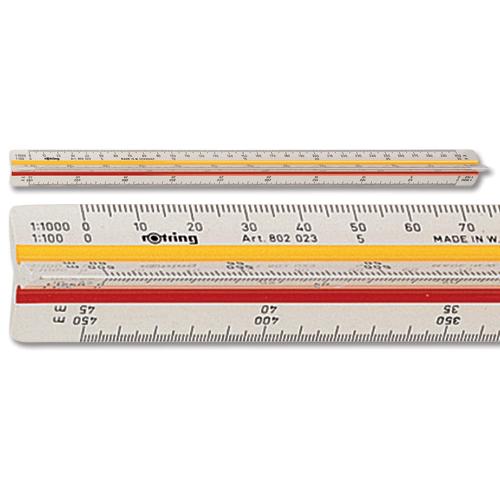
In the United States this scale is divided into decimalized fractions of an inch but has a cross-section like an equilateral triangle, which enables the scale to have six edges indexed for measurement. It is not to be used to measure machined parts to see if they meet specifications. For example, "one-tenth size" would appear on a drawing to indicate a part larger than the drawing on the paper itself. It is used in making engineering drawings, commonly called blueprints, blue lines, or plans on a specific scale. It is commonly made of plastic or aluminum and is just over 12 inches (300 mm) long, but with the only 12 inches of markings, leaving the ends unmarked so that the first and last measuring ticks do not wear off. 16 scales are engraved.Īn engineer's scale is a tool for measuring distances and transferring measurements at a fixed ratio of length.

In Britain, for flat rulers, the paired scales often found on architect's scales are:īoxed set of 1850s ivory engineer's scales presented to the railway civil engineer George Turnbull in India. In Britain, and elsewhere, the standard units used on architectural drawings are the (SI) units millimetres (mm) and metres (m), whereas in France centimetres (cm) and metres are most often used. Therefore, a drawing will indicate both its scale (ratio) and the unit of measurement being used. Three-thirty-seconds-inch-to-the-foot ( 3⁄ 32″=1′0″) (1:128)Īrchitect's scale rulers used in Britain and other metric countries are marked with ratios without reference to a base unit. The following scales are generally grouped in pairs using the same dual-numbered index line (one scale is read from the right, and the other scale is read from the left): Typical scales used in the United States are:įull scale, with inches, divided into sixteenths of an inch

A 1:5 architectural scale (inches to feet) would be a 1:60 unitless scale (inches to inches) since there are 60 inches in 5 feet.

It is not to be confused with a true unitless ratio. For example, one inch measured from a drawing with a scale of "one-inch-to-the-foot" is equivalent to one foot in the real world (a scale of 1:12 measured from a drawing with a scale of "two-inches-to-the-foot" is equivalent to six inches in the real world (a scale of 1:6). In the United States, and prior to metrication in Britain, Canada and Australia, architect's scales are marked as a ratio of x inches-to-the- foot (typically written as x″=1′-0″). Architect's scales may be flat, with 4 scales, or have asymmetric 3-lobed cross-section, with 6 or 12 scales. Scales were traditionally made of wood, but today they are usually made of rigid plastic or aluminum. A triangular architect's scale, made of brassĪn architect's scale is a specialized ruler designed to facilitate the drafting and measuring of architectural drawings, such as floor plans and Multi-view orthographic projections.īecause the scale of such drawings are often smaller than life-size, an architect's scale features multiple units of length and proportional length increments.įor accuracy and longevity, the material used should be dimensionally stable and durable.


 0 kommentar(er)
0 kommentar(er)
